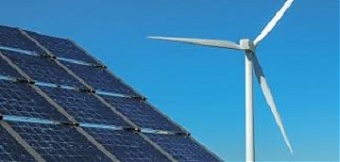Direct Speech, Energy, Energy Market, EU – Baltic States, Innovations, Technology
International Internet Magazine. Baltic States news & analytics
Wednesday, 31.12.2025, 10:53
Seizing the potential of climate solutions – and making the Baltics leaders in green economy
 Print version
Print version |
|---|
The Baltic
countries’ development over the past decades has been remarkable in an array of
sectors. For example, during the past ten years, the Baltics have shown one of
the highest renewable energy growth rates in the EU. This has been thanks to
the decisions of the governments in the region.
At the same
time, the
analysis carried out by SEI Tallinn and Sitra shows that the Baltics can
do even better and show more ambition, thereby further improving their
environmental performance. Green economy
is the way to go.
It is very
positive to note that Estonia has its Energy Development Plan until 2030 and
climate policy in place until 2050. Similarly, Latvia and Lithuania have new
strategies in place or in the making. However, according to the European
Commission's assessment, the countries’ environmental goals cannot be met
following the existing policies alone, therefore new and more effective
solutions are needed.
Our recent analysis
shows that, if the Baltics, instead of pursuing their current development trends,
would scale up 10 Nordic solutions that have proved their effectiveness, there
would be possibility for considerable progress. For example, Estonia would be
able to reduce its CO2 emissions by 40 percent by 2030 compared to the current
development trajectory.
As the
share of oil shale in Estonia’s power generation will have to decrease
significantly in the not too far future, the Estonian society must prepare for a
transition that would be as smooth as possible. The wider and more efficient use
of local renewable energy is one way of achieving this.
The 10 Nordic
solutions that could be scaled up in the Baltics and beyond are well known to
all and have a track record of proved effectiveness. The solutions include
solar and wind power, combined heat and power production, electric vehicles as
well as energy efficiency in buildings and the industry.
In the long
run, the introduction of these solutions could also save money. Thus, net
savings by the year 2030 could amount to as much as a total of € 1.2 billion in
the analysed countries (the Baltics, as well as Poland and Ukraine) combined.
The solutions bringing about the biggest benefit would be increasing the energy
efficiency of buildings and industry, where the benefits clearly outweigh the
investment cost over time.
The Baltics
have a great potential to reduce their carbon emissions much more than just following
their current development path. The proposed Nordic solutions would enable the
Baltics to increase the ambitions of their climate commitments and support the
EU to do the same, as required by the recent landmark report by the Intergovernmental
Panel on Climate Change (IPCC).
In addition
to direct cost savings and benefits, the implementation of the Nordic solutions
can also bring about socio-economic benefits in the Baltics. Examples of this
include improved air quality and reduced health risks associated with air
pollution, improved security of energy supply, job creation, as well as
additional tax revenues.
The findings are the results of the
"Green to Scale II" survey carried out by the SEI Tallinn (Estonia) and
Sitra (Finland) with the financial support of the Nordic Council of Ministers. Read
the full report: www.greentoscale.net.








 «The Baltic Course» Is Sold and Stays in Business!
«The Baltic Course» Is Sold and Stays in Business!

